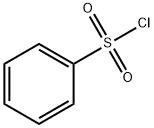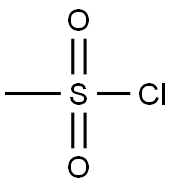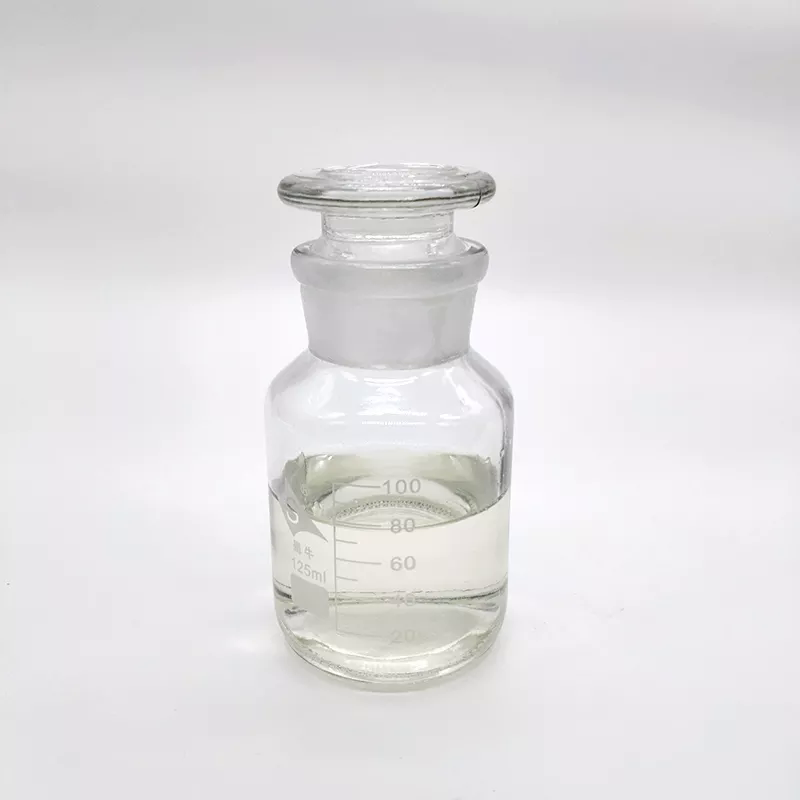3-Chloropropanesulfonyl chloride
- CAS NO.:1633-82-5
- Empirical Formula: C3H6Cl2O2S
- Molecular Weight: 177.05
- MDL number: MFCD00007463
- EINECS: 216-646-3
- SAFETY DATA SHEET (SDS)
- Update Date: 2024-04-08 17:36:13

What is 3-Chloropropanesulfonyl chloride?
Chemical properties
clear colorless to light brown liquid
The Uses of 3-Chloropropanesulfonyl chloride
3-Chloropropanesulfonyl chloride is an intermediate used in the preparation of many enzymatic inhibitors
The Uses of 3-Chloropropanesulfonyl chloride
Generation and trapping of the derived sulfene with imines and glyoxylates in the presence of chinchona alkaloids provide chiral sultams1 and sultones.2
The Uses of 3-Chloropropanesulfonyl chloride
3-Chloropropanesulfonyl Chloride is an intermediate used in the preparation of many enzymatic inhibitors. It is also used in the generation and trapping of the derived sulfene with imines and glyoxylates in the presence of chinchona alkaloids provide chiral sultams and sultones. It is mainly used for the synthesis of pharmaceutical intermediates.
What are the applications of Application
3-Chloropropanesulfonyl Chloride is an intermediate used in the preparation of many enzymatic inhibitors
Properties of 3-Chloropropanesulfonyl chloride
| Boiling point: | 70 °C/0.5 mmHg (lit.) |
| Density | 1.456 g/mL at 25 °C (lit.) |
| refractive index | n |
| Flash point: | >230 °F |
| storage temp. | 2-8°C |
| solubility | Soluble in dichloromethane, ethyl Acetate and hexane. |
| form | Liquid |
| color | Clear colorless to light brown |
| Sensitive | Lachrymatory |
| BRN | 1754119 |
| CAS DataBase Reference | 1633-82-5(CAS DataBase Reference) |
Safety information for 3-Chloropropanesulfonyl chloride
| Signal word | Danger |
| Pictogram(s) |
 Corrosion Corrosives GHS05  Exclamation Mark Irritant GHS07 |
| GHS Hazard Statements |
H314:Skin corrosion/irritation H335:Specific target organ toxicity, single exposure;Respiratory tract irritation |
| Precautionary Statement Codes |
P261:Avoid breathing dust/fume/gas/mist/vapours/spray. P271:Use only outdoors or in a well-ventilated area. P280:Wear protective gloves/protective clothing/eye protection/face protection. P301+P330+P331:IF SWALLOWED: Rinse mouth. Do NOT induce vomiting. P303+P361+P353:IF ON SKIN (or hair): Remove/Take off Immediately all contaminated clothing. Rinse SKIN with water/shower. P305+P351+P338:IF IN EYES: Rinse cautiously with water for several minutes. Remove contact lenses, if present and easy to do. Continuerinsing. |
Computed Descriptors for 3-Chloropropanesulfonyl chloride
New Products
Tert-butyl bis(2-chloroethyl)carbamate (S)-3-Aminobutanenitrile hydrochloride N-Boc-D-alaninol N-BOC-D/L-ALANINOL N-octanoyl benzotriazole 4-Hydrazinobenzoic acid 3,4-Dibenzyloxybenzaldehyde 1,1’-CARBONYLDIIMIDAZOLE R-2-BENZYLOXY PROPIONIC ACID 1,1’-CARBONYLDI (1,2-4 TRIAZOLE) 4-HYDROXY BENZYL ALCOHOL 3-NITRO-2-METHYL ANILINE (2-Hydroxyphenyl)acetonitrile 4-Bromopyrazole 5-BROMO-2CYANO PYRIDINE 5,6-Dimethoxyindanone 5-broMo-2-chloro-N-cyclopentylpyriMidin-4-aMine 4-methoxy-3,5-dinitropyridine 2-(Cyanocyclohexyl)acetic acid 2-aminopropyl benzoate hydrochloride 1-(4-(aminomethyl)benzyl)urea hydrochloride tert-butyl 4- (ureidomethyl)benzylcarbamate diethyl 2-(2-((tertbutoxycarbonyl)amino) ethyl)malonate Ethyl-2-chloro((4-methoxyphenyl)hydrazono)acetateRelated products of tetrahydrofuran





![2-[[(2-ethylphenyl)(2-hydroxyethyl)amino]methyl]-3,3-difluoro-Propanenitrile](https://img.chemicalbook.in/CAS/GIF/2647-14-5.gif)


You may like
-
 1633-82-5 3-Chloropropanesulfonyl chloride 98%View Details
1633-82-5 3-Chloropropanesulfonyl chloride 98%View Details
1633-82-5 -
 3-Chloropropanesulfonyl chloride, 96% CAS 1633-82-5View Details
3-Chloropropanesulfonyl chloride, 96% CAS 1633-82-5View Details
1633-82-5 -
 3-Chloropropanesulfonyl chloride CAS 1633-82-5View Details
3-Chloropropanesulfonyl chloride CAS 1633-82-5View Details
1633-82-5 -
 55441-95-7 99%View Details
55441-95-7 99%View Details
55441-95-7 -
 N-Vinylformamide 99%View Details
N-Vinylformamide 99%View Details
13162-05-5 -
 Chloro Uracil 1820-81-1 99%View Details
Chloro Uracil 1820-81-1 99%View Details
1820-81-1 -
 2-ethyl-6-methyl-3-hydroxypyridine succinate 99%View Details
2-ethyl-6-methyl-3-hydroxypyridine succinate 99%View Details
127464-43-1 -
 2-ETHYLPYRIDINE 100-71-0 99%View Details
2-ETHYLPYRIDINE 100-71-0 99%View Details
100-71-0